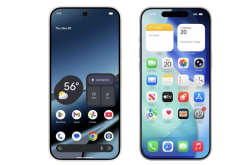Online Endures, Offline Flourishes: The Dawn of a New Era in Deeply Integrated E-commerce
![]() 11/24 2025
11/24 2025
![]() 363
363

As the e-commerce penetration rate in the Chinese market soars to unprecedented heights, the long-anticipated integration of online and offline channels is no longer a mere pipe dream. This development presents a golden opportunity for both major e-commerce platforms and offline supermarkets, such as Walmart and Yonghui. Consequently, we've observed major e-commerce platforms venturing into offline supermarket operations, while offline supermarkets have started leveraging online apps to offer consumers a completely novel shopping experience.
As this trend gains momentum, the e-commerce industry is poised for a technological revolution driven by AI, as well as a transformation towards a new business model centered on the deep integration of online and offline channels. This raises a pertinent question: As the deep integration of online and offline becomes mainstream, in which direction will the future of e-commerce evolve? How will industry players adapt under this new model, and what development dividends will they reap?
Both the fundamental restructuring of the e-commerce industry by AI technology and the external transformation of e-commerce through deep online-offline integration are indicative of the industry's evolution. Through these transformations, we can catch a glimpse of a new future for e-commerce and uncover numerous fresh development opportunities.
Online and Offline: From Rivals to Allies
Let's rewind to the era when e-commerce was booming, particularly when e-commerce platforms and offline physical stores were locked in fierce competition. During that time, online e-commerce platforms and offline physical merchants were natural adversaries, both vying for consumers' attention and wallets. As the influence of the internet deepened, especially as it expanded from the consumer (C) end to the business (B) end, the internet ceased to be the exclusive domain of online players. Even offline physical merchants began incorporating internet elements into their operations.
As the internet became ubiquitous, online players realized that they couldn't replace certain inherent advantages of offline players. Simultaneously, offline players discovered that they could leverage certain online advantages to compensate for their own shortcomings. Consequently, we witnessed increasing connections between online e-commerce platforms and offline physical supermarkets. Through this integration, online players empowered offline physical merchants with traffic, while offline physical stores helped online e-commerce platforms address their supply chain deficiencies.
As the internet's influence deepened, the adversarial relationship between online and offline players gave way to a more collaborative dynamic. Online players began utilizing their digital advantages and established logistics and delivery networks to assist offline players in achieving instant delivery, ultimately making instant retail a new trend. Offline players, leveraging their supply chain and industrial chain advantages, continuously optimized the supply chain and industrial chain shortcomings of online players, enabling online players to truly offer what consumers see is what they get, thereby enhancing and upgrading the consumer experience.
At this juncture, offline and online players ceased to be competitors and instead became mutually coordinated and supportive entities. Consequently, the gap between online and offline gradually narrowed, and new retail formats, such as instant retail and community retail, emerged as the new choices for consumers following the deep integration of online and offline.
Online and Offline: From Separation to Deep Integration
According to traditional logic, online and offline were perceived as entirely incompatible entities. This perception stemmed from the inherent differences in elements, processes, and other aspects between online and offline, ultimately rendering true deep integration unattainable. This understanding was rooted in traditional technological conditions and business logic. However, with the evolution of the internet, particularly the advent of the digital age and the subsequent popularity of the AI era, the gap between offline and online began to narrow, and the barriers separating them started to crumble, giving rise to a new evolution dominated by the deep integration of online and offline.
One crucial reason for this shift is the increased possibility of further integrating the inherent elements, processes, and links of online and offline that were previously difficult to merge. Another significant factor is that both online and offline players now regard digitization as their standard, transforming previously unbridgeable and disconnected entities under traditional logic into interconnected and even convergent ones.
Currently, the profound transformation of traditional human, financial, and material resources by digitization and the common replacement of online and offline elements by AI factors provide new possibilities for the deep integration of online and offline. At this juncture, online and offline are no longer isolated entities but have become entities where different elements, processes, and links can undergo deep integration. As the deep integration of online and offline continues to materialize, new models and industrial forms will emerge, opening up more new opportunities for player development.
Online and Offline: From Zero-Sum Game to Coexistence
Previously, the competition between online and offline players for consumers and market share was essentially a zero-sum game. Although this competitive state ensured that each side reaped as many benefits as possible, it ultimately led to imbalances, such as online prosperity and offline stagnation. Moreover, this zero-sum game state eventually revealed to players that online and offline could not completely replace each other.
For instance, online players could not replicate the advantages of offline players in terms of the commodity supply chain and industrial chain, nor could they surpass the shopping experience advantages of offline players. Similarly, offline players could not match the advantages of online players in establishing connections between commodities and consumers, nor could they anticipate the significant digitization advantages of online players.
As the zero-sum game between online and offline reached a certain stage, particularly with the rise of new concepts represented by new retail, instant retail, and community retail, the relationship between online and offline began to transform from a traditional zero-sum game to coexistence.
If we consider the zero-sum game as the industrial dividend of the internet era, then coexistence and mutual collaboration represent the new industrial dividend of the AI era. For online and offline players, the key to unlocking new industrial dividends may lie in evolving to find ways and methods for coexistence, rather than engaging in a life-and-death struggle or being incompatible.
Today, the new industrial dividends obtained by offline retail players through digitization and by online retail players through instant retail and community retail are all derived from the new model of coexistence.
Currently, the e-commerce penetration rate in the Chinese market has reached a new high. At this stage, adhering solely to previous development models, particularly the split development models of online and offline, will inevitably fail to yield new development. It is precisely at this moment that we witness the emergence of new models dominated by the deep integration of online and offline, represented by instant retail and community retail. Against this backdrop, new industrial dividends have begun to emerge. Seizing the new industrial dividends from the deep integration of online and offline may be the key to finding a brighter future for the new industry.








